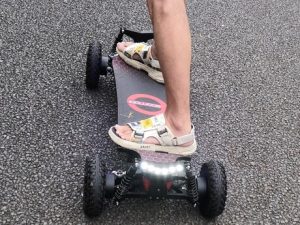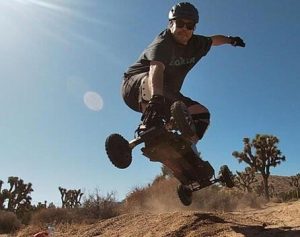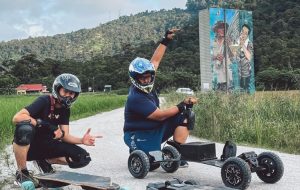Introduction
Electric skateboards have exploded in popularity in recent years, offering riders a whole new world of possibilities. Unlike traditional kickboards that rely solely on your own momentum, e-boards use small electric motors and rechargeable batteries to propel you forward at the press of a button. This opens up skateboarding to more people while giving experienced shredders even greater control and speed. But moving to an electric ride means adopting some new techniques to get the most enjoyment and safety out of your e-board. There are a few key styles to master.

Kick Push Technique
First up is the good ol’ kick push. Even if you’re riding electric, kick pushing is a must-have skill for when your battery runs low or you just want to cruise casually. Stand sideways with your front foot forward to steer and your back foot on the rear truck for balance. Then, simply push and glide as you would on a regular board, kicking with each foot to steadily gain momentum. Kick pushing builds up your balance, strength, and feel for shifting your weight to control speed. It’s the perfect way to squeeze out extra mileage or just cruise lightly.
Cruising Technique
Nothing beats the magic carpet feeling of cruising mode though. With a subtle lean, the motor smoothly whisks you forward without any pushing required. For super stable cruising, start with knees bent in an athletic stance centered over the board. Go slow at first to get a feel for how your weight distribution affects acceleration and turning. Leaning forward speeds you up, pulling back gently brakes. Slight side-to-side shifts carve smooth turns. Dialing in your cruising stance lets you glide effortlessly while remaining in complete control.
Mastering Turns
Making smooth turns is an essential skill for navigating both city streets and more technical trails. The most effective turning technique involves leaning your entire body into the direction of the turn, similar to carving on a snowboard. Shift your weight over the front foot when turning right and the back foot when turning left to initiate the angle.
Speed should also be reduced beforehand to allow for tight control. Leaning completely sideways without keeping knees bent is a mistake that can lead to spills. Another error to avoid is counter-steering, or momentarily pushing the board in the opposite direction of the turn, which can cause a loss of traction. Practice by gradually reducing your radius in wide open spaces until rotations feel second nature at any pace. Experiment also with switch stance turns, where your trailing foot leads the pivot. With repetition, electric board handling will become instinctive through any kind of cornering scenario. Progressive carving skill truly unleashes the thrill of agile cruising.

Uphill and Downhill Riding
Mastering inclines and declines expands the terrain possibilities of electric skateboarding. Charging up steep slopes requires shifting weight as far back as comfortably allows while maintaining board contact. Accelerate gently to avoid wheel spin, and keep your descent slow upon reaching the peak. For downhills, getting low helps with balance and control over fluctuating speeds.
Modulate between braking and coasting so momentum doesn’t get away from you. Adjusting the motor speed and remaining poised helps negotiate bumpy descents safely. When confronting very steep drops, dismounting and walking may be the wisest choice depending on your experience and board ability. For challenging inclines, you can also kick push to assist the motor. Extend your back leg to propel upward momentum. Loose, gravelly paths necessitate extra care with braking and carving to maximize traction. With practice judging different grades and conditions, uphill and downhill riding can be tackled with confidence on a variety of terrains.
Advanced Maneuvers
Electric skateboards offer riders awesome opportunities to get creative and do cool tricks. From basic slides where you drift the board sideways while moving forward to fancy dance moves where you can hop and spin over stuff, the possibilities are endless for showing off your own style.

Of course, you’ll want to master the basics like kicking, turning, and staying balanced before trying anything too crazy. Wearing protection is a must too for jumps and aerials. When learning new tricks, break them down step-by-step in a safe spot without distractions. Focus on control rather than speed until the moves click together smoothly. Filming your practice helps you check your form and tweak things. While competing in slalom runs takes lightning reflexes, solo freestyle sessions are best for getting into that flow state. With patience and an open mind, electric skateboarding unlocks a way to truly express your individuality in motion. The board becomes an extension of yourself.
Conclusion
Whether one’s interest lies in leisurely cruising or progressive stunt work, committing to a regular electric skateboarding practice of all techniques discussed ensures continued progression. With a dedication to safety first through protective gearing up, riders of any experience level can further develop their skills and confidence on the board. Electric boards unlock an immense sense of flow and freedom when using them as a creative passion. With ongoing commitment, riders can progress their abilities endlessly and look back proudly on how far their skills have come.
Read More
- Master Emergency Braking On Electric Skateboard – Ecomobl
- Beginners Guide To Electric Mountain Board Control – Ecomobl
- The Best Electric Skateboard With An Affordable Price – Ecomobl
- Beginners Electric Skateboards Guide – Ecomobl
- Optimal Wheel Size Electric Skateboard – Ecomobl




